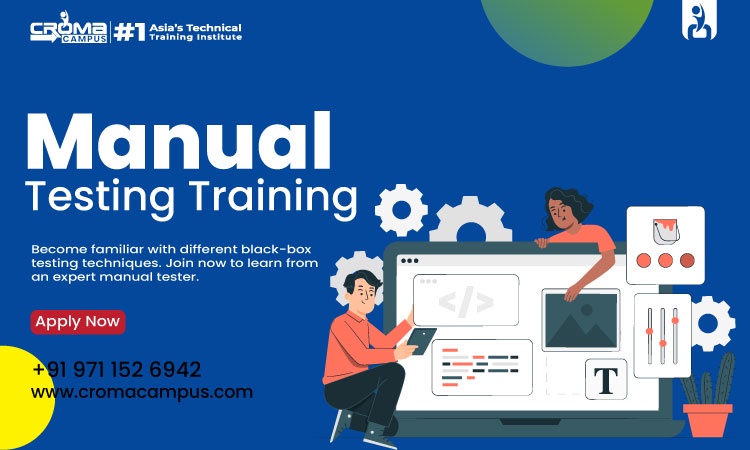INTRODUCTION
Manual testing is a process of software testing, where testing happens manually without the use of any automated testing tool. Testers execute the test cases manually, from the end user’s perspective. It mainly tests whether the application is functioning as expected in the requirement document or not. It is one of the critical testing processes to detect both hidden and visible bugs in the software. Manual testing additionally requires great time and effort; however, it gives a guarantee of bug-free software. So, in order to make a good career in Software testing you must learn Manual testing. With Manual Testing Online Training in India, you can its different functionalities and work efficiently on any given software.
Why do you need manual testing?
Human Perspective: The basic usability feature and look & feel of the application can only be available from a Human perspective.
A wider perspective and variation of the System workflows: Manual verification offers a broader perspective of the overall application. As the human mind will examine different defaults, where the coding mechanism executes the same steps each time. Thus, providing better expansive coverage for the system validation.
Cost of automation: Sometimes, due to the time constraints or size of the project, automation is not justifiable. Thus, opting for a quick manual validation over automation testing is a better solution at hand.
When Do You opt for manual testing?
So, the question remains when exactly you should do manual testing, or which scenarios compel you to opt for this type of testing? To answer this, let’s go through the following scenarios:
Adhoc testing: Adhoc testing is basically unplanned testing. It does not offer any specific approach neither it has any documentation with it. Additionally, Adhoc testing is entirely informal, and the only essential factor is the knowledge and insight of the tester. Thus, in such cases, manual testing is quite a good option.
Usability testing: Another scenario where manual testing is essential in the case of usability testing. Besides, you mainly go for usability testing to assess how convenient, efficient, and user-friendly the product is for the end users. For this assessment, you need the highest manual intervention and cannot rely on tools to assess it. Hence to evaluate the product from the end-user point of view, you generally opt for manual testing.
Exploratory testing: When the documentation of the test is poor, and has less time for execution, in such cases, this exploratory testing needs the analytical skills and creativity of the tester and also the tester's product knowledge.
What are the different types of manual testing?
Unit Testing
Validation of an individual software component or a module is known as Unit Testing. Generally, the developers perform it and not the QA Engineers, as it additionally needs detailed knowledge of the internal program design and code.
Integration Testing
Integration testing is the testing of a subsystem that comprises two or more integrating components. It’s done after unit testing. It is basically done to find defects in the interfaces and the interactions between its integrated components.
System Testing
System Testing means testing the overall system. After Unit testing, all components are integrated into an application. Once this finishes, you test the entire system rigorously to assure the application meets all the given quality standards.
Acceptance Testing
Here, the client verifies the requirements that were set earlier. It is basically the last stage of testing, before moving the software application to the Market or Production environment.
Black Box Testing
The testing mainly happens from the customer's point of view. And the tester knows clearly about the inputs and the expected outputs of the application.
White Box Testing
White Box Testing is the testing method in which the tester knows the relevant internal codes & structure of the software. The tester then chooses inputs and executes the test by giving inputs to the system through the codes and determining the appropriate outputs.
CONCLUSION
Manual testing requires creative skill and imagination, using which a tester can imagine different scenarios to test an application. Additionally, the manual tester does not require to have expert software skills, however, creativity and imagination are essential. To learn its different criteria, Manual Testing Training Institute in Gurgaon is the best option available to learn this testing approach. Although, we can only find specific bugs by testing the application manually.


No comments yet